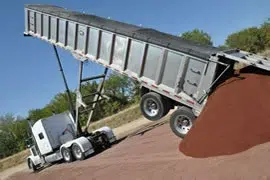The most important ingredient is the base soil. To find an acceptable base soil, you need to look at the percentages of sand, silt and clay.
A good starting point is a soil with 60% sand, 20% silt, and 20% clay. Too much sand will prevent the soil from packing tight enough and will cause low spots in high traffic areas. Too little sand will make the infield sloppy after a rain and too hard in the heat of the summer. Excessive amounts of silt will make the field greasy when wet and produce excessive dust when dry. Silt and clay, when combined with water, are the glue that holds the soil together. These two combined should be less than fifty percent. It is important to have the soil tested. There are several labs around the country that can do these tests. Know what you are buying.
Once an acceptable soil has been located, it should be sifted through a ¼” screen. This will remove trash such as rocks and roots. The addition of a soil conditioner, such as Diamond Pro Infield Conditioner, is a good idea during construction. This will help manage the moisture content in the infield skin during wet or dry weather. Topdressing the skin with ¼” of the same material will enhance the playability and safety of the infield, and will help with moisture management as well.
Drainage
The most critical element in infield drainage is the surface grade. The composition of the infield soil makes sub-surface drainage ineffective. The soil is too tightly compacted to allow water to pass through. Skinned infields drain at less than 1/10” per hour. The only way to effectively remove excess water is to set the grade so that water flows off at the surface. A one-half percent fall, from the pitchers mound in all directions, will accomplish this. Once you get past the baselines, the grade should be increased to three-quarters to one-percent fall. This will allow the excess water to flow away from the infield at a faster rate.

